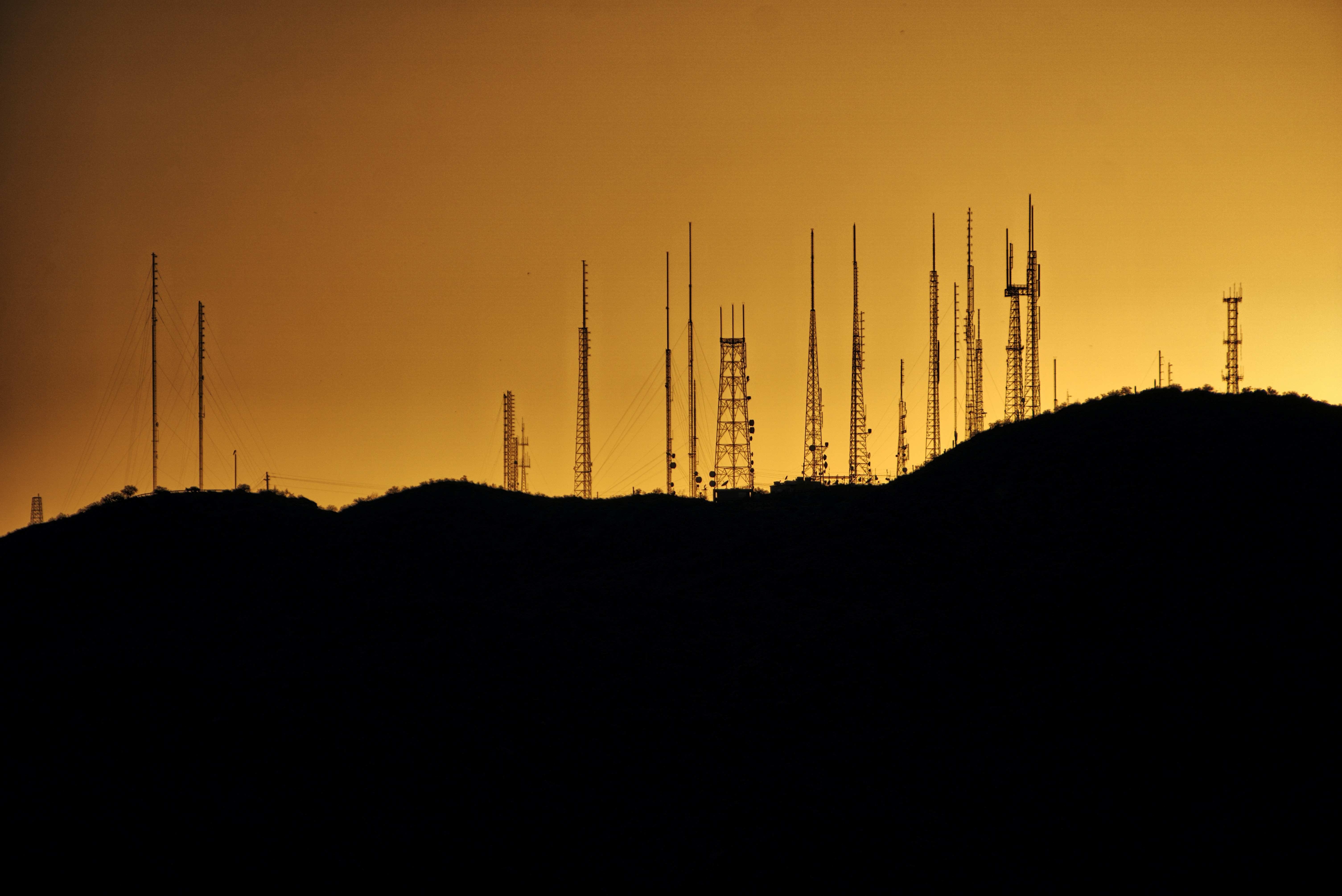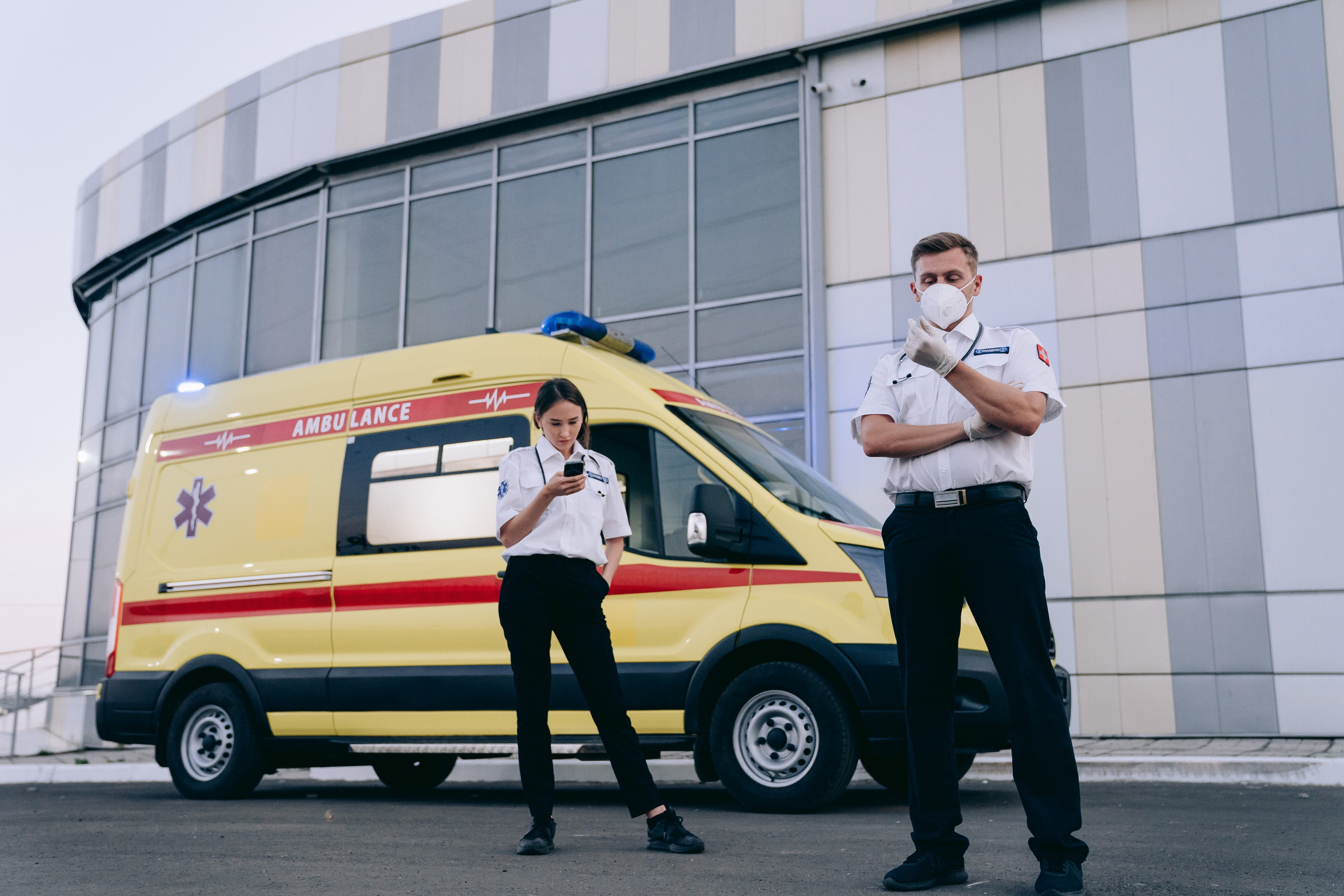Request a
Quote
COWs or cells on wheels is an optimal technology for emergencies ranging from forest fires to simply needing connection during construction. Portable cell towers are necessary to provide connection in rural areas or even highly populated areas during natural disasters, large events, or emergencies. If you’re looking for a proven way to close your coverage gap, a cell tower on wheels is your solution. Read this article to learn about COWs and determine which is right for you.
What is a cow?
COW which stands for cell on wheels is a mobile cell site that is used to create or boost cellular networks for big events, emergencies, or while a tower is being built. A portable cellular tower includes a tower, transceiver, and other necessary equipment on a truck or trailer.
Sometimes the other parts of a COW are a mast, mounting pole, trailer hitch, outrigger, generator inlet, and air conditioner. Moreover, there are different sizes and specifications for different needs. Some things to take into consideration are stability, signal strength, and ease of access.
A COW is meant to be a short-term solution, not for permanent use. However, typically the higher the quality, the longer the COW can be used. Cells on wheels are often appreciated for their portability but they also can be installed in a permanent location; they just cannot be used permanently.
Cellular COWs are made to be portable which makes them extremely useful for emergency situations. Check out the next section to understand when and where cells on wheels are useful.
When to use a cow?
COWs can be convenient for a variety of situations but the most useful are during emergencies, large events, and the building/approval process of new towers.
During emergencies like natural disasters, first responders need reliable and consistent connections. Communication is a primary tool during rescue jobs and without it, first responders cannot do their jobs to the fullest.
In 2005 when hurricane Katrina struck Louisiana, first responders needed communication tools more than ever. However, the hurricane took out most, if not all, of the standing cell towers, ultimately knocking out communications. COWs were brought in to make up for the lack of signal. No signal can occur even in well-populated areas, not just rural places.
Portable cell towers have also been implemented in emergency situations during wildfires out on the U.S. west coast. During wildfires, firefighters set up an emergency center for everyone to gather during search and rescue.
In addition to emergencies, mobile cell towers are also used during large events. For instance, sporting events, concerts, conventions, inaugurations, and protests can attract very large crowds and ultimately jam signals.
Unfortunately, during big gatherings like the above, serious emergencies can occur and as stated before, first responders need to be able to communicate in order to properly protect the public. Therefore, COWs are useful during large gatherings.
During the inauguration of President Obama, COWs were installed at the National Mall. Since then, COWs have been installed in the area both temporary and permanent structures. They have proved useful during large protests, starting with the Women’s March in 2017.
Lastly, cellular on wheels are used in instances when telecommunications providers are in the process of building and gaining approval for a new tower. With a cell on wheels, they will be able to provide a signal to the area the future permanent cellular tower will cover.
Overall, portable cellular towers are extremely useful during pressing situations that require clear and critical communication.
What types of cows are available and where to use them?
There are many types of COWs. There are some generalizations that can be made about the technology; however, there are so many types because most COW producers offer the option for customers to customize their products.
Customization is important when it comes to COWs because they are used for serious situations and need to be able to match the situation a user is addressing. Sun West Engineering offers custom COWs and stock options which I will go over below.
Mini-COW:
The Mini-COW is the smallest cell on wheels Sun West offers. It can be used for a variety of situations. Special event coverage or remote construction like water tower repaints are great places to use the Mini-COW.
To learn more about the Mini-COW, go here.
Small Cell COW:
The Small Cell COW is great for emergency situations or impromptu large social events. It is great because it is used for fast setup and small or tight spots. It is also great for disaster recovery because it can be towed by a ½ ton truck, aiding in the small setup.
To learn more about the Small Cell COW, visit here.
Scissor Lift COW:
The Scissor Lift COW is an extremely unique piece of technology; it is patented by Sun West Engineering. This portable cellular tower deploys the masting and multi-beam antennas without cranes and man lifts. Its convenience also eliminated extra time and costs that can be involved in setting up larger COWs.
The Scissor Lift COW could be great for large events where the users don’t have a lot of time for setup and need to cut costs but still have far-reaching signals. Lastly, the Scissor Lift runs off of vegetable oil so it can be taken anywhere.
To learn more about the scissor lift COW, go here.
Remote Radio Head COW:
The Remote Radio Head COW can carry 40 installed and plumbed remote radio heads. It is known for easy installation and maintenance. Moreover, it can connect directly to antennas. This portable cellular tower is good for large events.
To learn more about the Remote Radio Head COW, go here.
Standard 18’, 20’, 22’ COW:
The Standard COW can carry more equipment than the mini-COW. With the additional room, it can have a larger generator. The larger size makes the Standard COW good for special events, temporary construction, network restoration, and first responder requirements.
To learn more about the Standard COW, go here.
Large 26’ COW:
The Large COW has the largest equipment cabinets. Similar to the Standard COW, the Large COW is good for larger events and almost any situation. Moreover, the Large COW is good for longer events because of its size.
Learn about the Large COW go here.
80’ 100’ 120’ TOW—Tower on wheels:
The TOW or tower on wheels is the largest and most permanent option when it comes to portable cell towers. It has the maximum deployable height offering the best reach for signal. The tower on wheels is perfect for situations where telecommunications companies are building a tower and need a signal in the meantime.
Learn more about the tower on wheels here.
How much does all of this cost?
Portable cellular towers tend to be a large expense; however, they are necessary. When looking to use a COW, you have the option to buy or rent. This is convenient if you are in a position where you will not need a cell on wheels often or at last minute notice, then you can rent.
Renting could be a good option for event organizers and venues. First responder units, on the other hand, may want to buy so they are guaranteed access to the technology. Most rentals cost around $4,000 per month.
When purchasing or renting a cell on wheels, it is important to keep in mind that the bigger the system, the more it will cost. For very large events, sometimes it is necessary to have the larger equipment, but if you are running a smaller event that isn’t going to last very long, the smaller COWs will work just as well.
When trying to save money, it is important to get exactly what you need, especially when most of the systems cost around $45,000 more or less. As I stated above, many manufacturers of cells on wheels offer customization options. With the ability to customize a COW to exactly what you need, you won’t have to worry about paying for technology that you don’t need or won’t use.
Overall, when you are going to make your first COW purchase, make sure you know if you want to rent or buy, know what your COW needs to support, and search for companies that offer customization.
5G and COWs
COWs are the go-to option for closing a coverage gap, but what about 5G. The more 5G is developed, the more devices that are made. Moreover, more and more people are owning 5G phones. Are these a solution for coverage gaps? In some scenarios, yes, 5G phones can be a great solution. However, 5G still has a ways to go, Verizon and AT&T have been fighting tooth and nail to get as many towers built as possible across the U.S.
Recently, the companies have both come to a halt in the building because problems have occurred where the 5G signal is interfering with airplanes. Therefore, 5G is a good solution in the future but at the present time, COWs are still the best option especially since most people still own only 4G LTE capable cell phones and technology.
COWs are portable cell towers that are significant for those in the critical communications industry. COW cell towers are often customized to fit the situation you are trying to address. If you are a first responder and you are looking for a COW, you may find the smaller options are better for getting somewhere faster.
When purchasing a COW, you must know how a COW can help you, what situation you are responding to, what your budget is, and what you need the COW to do.
Closing a coverage gap is not an easy task, especially during high-stress situations like natural disasters; cell on wheels is a proven solution to getting clear and consistent signals in dire situations.



